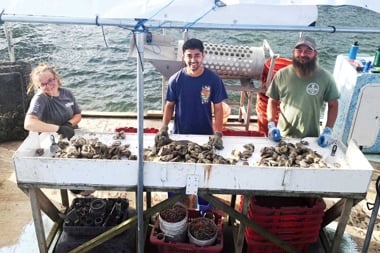
Our pressure cooker recipes give fast food a whole new healthy meaning. Learn how pressure cookers work and how they preserve nutrients while cooking delicious food.
To the uninitiated cook, a pressure cooker may seem like a daunting culinary appliance, but with modern safety improvements they’ve become especially easy and safe to use. I am a fervent believer (and user) of pressure cookers—they preserve foods’ nutrients, they’re safe, and they deliver delicious meals in a fraction of the time of traditional cooking methods.
How do they work?
The liquid inside the pressure cooker will heat up and create steam. Steam at 250 F (120 C) is hotter than boiling water (212 F/100 C) and creates pressure, which in turn creates energy used to cook food.
If the lid is not in locked position, it will cook like a regular pot, but when the lid is locked and the cooker is sealed, pressure will start building up. Every pressure cooker has a pressure gauge indicating the level of pressure within the cooker. This is important, as some foods need low pressure while others require higher pressure. Cooking time is always calculated from the time the required pressure level has been reached.
Are they safe?
Pressure cookers have come a long way. Today’s pressure cookers have built-in safety mechanisms that will make it impossible for the lid to be opened for as long as there is pressure inside the cooker. (Wearing ski goggles, long oven mitts, and a thick apron, I tried to pry mine open to test this statement, but to no avail. The safety mechanism locked the lid, and I wasn’t able to move it even slightly.)
Furthermore, if too much pressure is built up, today’s pressure cooker is engineered to self-release the pressure to a safe level without any intervention. It will whistle to catch your attention, but will not release its contents.
Recipes
Which one to choose?
This is one cooking utensil where it is worth investing in quality.
Size
Pressure cookers come in various sizes, so this is a decision based on your family’s needs. Remember that it is always possible to cook a smaller quantity in a large pot, but rather difficult to cook a large quantity in a small one! Since steam needs room to build up, a pressure cooker cannot be filled more than two-thirds so this should be a consideration when choosing a model. Additionally, a wider base model will give you more surface to brown food and speed up the process.
Material
Stainless steel is the material of choice for pressure cookers, and it should have a thick bottom, which will help conduct heat and build up steam. All parts should be removable for cleaning, including handles and gauges, or have appropriate instructions on how to clean vents and the pressure gauge for optimum performance.
Pressure
Make sure your pressure cooker creates steam at a hot enough temperature to reach as close to 15 psi (pounds per square inch) as possible. This is achieved when steam reaches 250 F (120 C).
Safety mechanism
Although all pressure cookers have safety mechanisms, some have more than others. Look for self-release when pressure is too high, locked-in handle when pressure is built up, easy quick-release when time is done and cooking needs to be stopped, and easy-to-read and -use instructions.
Release pressure mechanisms
Each brand of pressure cooker will have its own particularities, but it is essential that there be a quick pressure release mechanism to release all the pressure inside the cooker once cooking time has been reached.
Alternatively, pressure will release itself once heat is stopped and no more steam is created. The steam inside the cooker will self-release through the vents and the lid will be unlocked once all the pressure is gone.
How do they work?
The liquid inside the pressure cooker will heat up and create steam. Steam at 250 F (120 C) is hotter than boiling water (212 F/100 C) and creates pressure, which in turn creates energy used to cook food.
If the lid is not in locked position, it will cook like a regular pot, but when the lid is locked and the cooker is sealed, pressure will start building up. Every pressure cooker has a pressure gauge indicating the level of pressure within the cooker. This is important, as some foods need low pressure while others require higher pressure. Cooking time is always calculated from the time the required pressure level has been reached.
Are they safe?
Pressure cookers have come a long way. Today’s pressure cookers have built-in safety mechanisms that will make it impossible for the lid to be opened for as long as there is pressure inside the cooker. (Wearing ski goggles, long oven mitts, and a thick apron, I tried to pry mine open to test this statement, but to no avail. The safety mechanism locked the lid, and I wasn’t able to move it even slightly.)
Furthermore, if too much pressure is built up, today’s pressure cooker is engineered to self-release the pressure to a safe level without any intervention. It will whistle to catch your attention, but will not release its contents.
Don’t hesitate to adapt your favourite recipes from traditional cooking to pressure cooking. The guideline is to start your recipe as you would normally and then convert cooking time of major ingredients. You will need to fine-tune cooking time to your personal preferences and pressure cooker, but overall, this will enable you to switch cooking methods easily. Every pressure cooker comes with a chart based on specific heat efficiency; keep it at hand for quick reference.
A few tricks of the trade
Liquid is always needed when cooking with a pressure cooker; no liquid evaporation means no steam, and no steam means no pressure.
Shake your pressure cooker a few times back and forth before opening to release steam that might have gotten trapped under food.
Always open the lid away from you to avoid escaping remnant steam.
Never store your pressure cooker with the lid in lock position, as this will cause wear to the rubber casket inside the lid.
Always clean all parts and vents and dry thoroughly before storing to prevent food from sticking and clogging the vents, thus preventing the cooker from operating properly.




